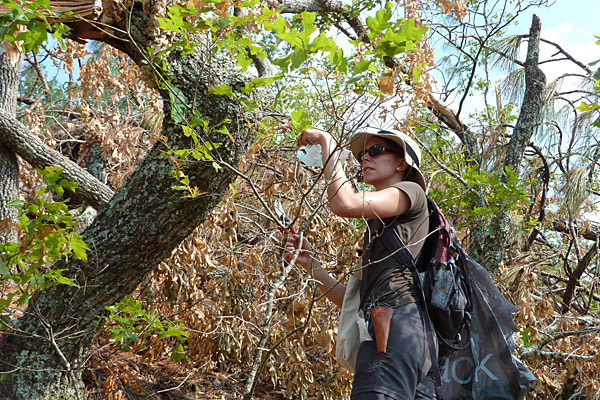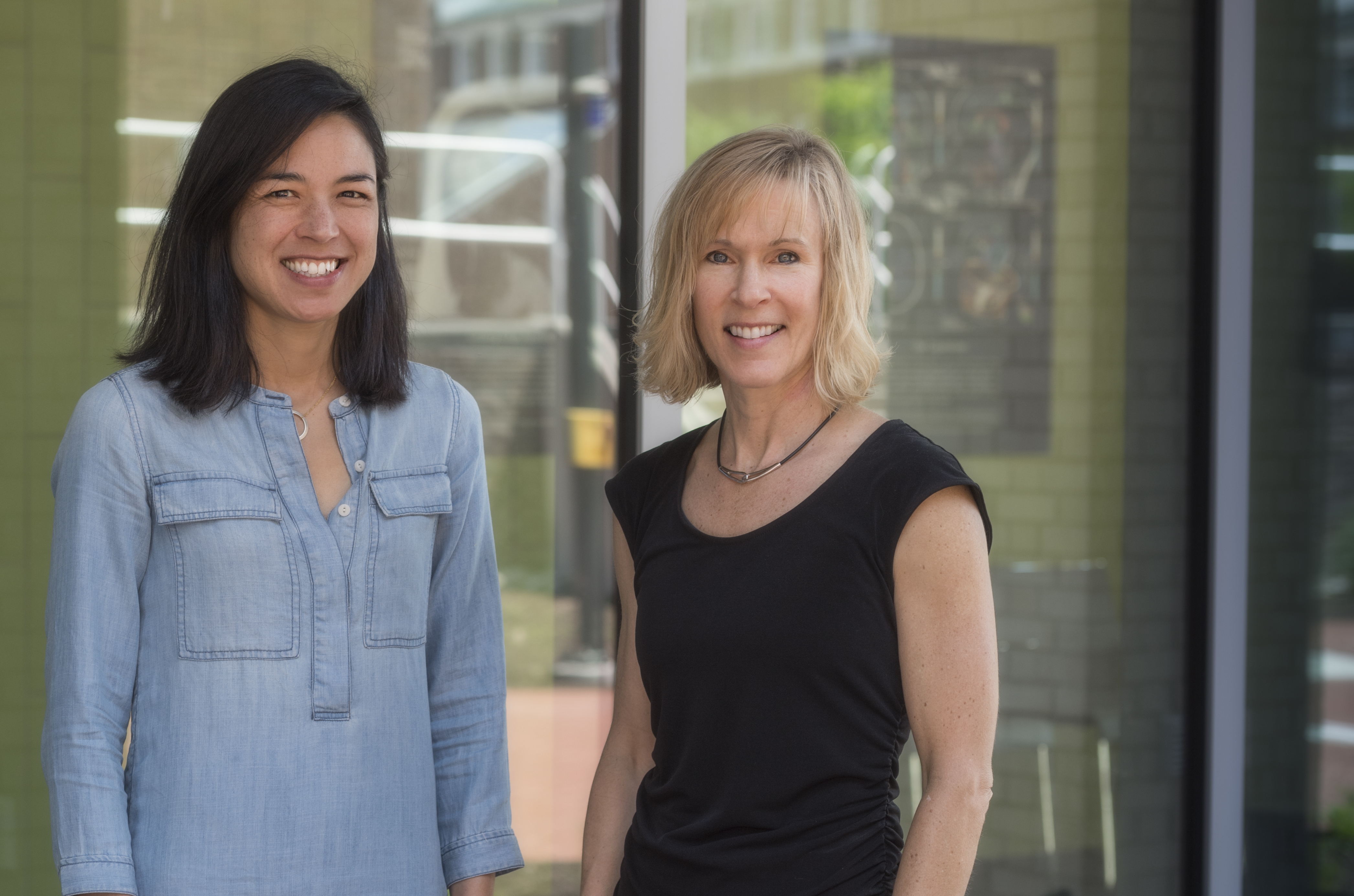


Plant protection
UD grad student, local botanic gardens work to protect threatened plant species
7:53 a.m., March 28, 2012--Last spring, Raakel Toppila trekked through Atlanta’s Stone Mountain Park and other wooded areas in Georgia and Alabama, collecting leaf samples from the Georgia oak, a scrappy little tree that grows on granite and sandstone outcroppings.
A student in the University of Delaware’s Longwood Graduate Program, Toppila’s intent was to discover how each leaf -- and the particular oak population that it came from -- differed in its DNA make-up. Armed with this information, Toppila says that botanic gardens and other natural areas will be able to better protect and revitalize the Georgia oak, which is listed as threatened by the U.S. Fish and Wildlife Service.
Research Stories
Chronic wounds
Prof. Heck's legacy
The Ontario native is interested in the role that botanic gardens can play in cultivating tree species that are at risk of extinction. “Thousands of plant species world-wide are currently threatened with extinction,” says Toppila. “Just as zoos have been at the forefront of animal conservation, gardens can start to play a similar role.”
Locally, she notes that several botanic gardens, including Mt. Cuba, are ahead of the curve and already have done considerable work focused on the conservation of native species. Since its inception as the private garden of Lammot and Pamela du Pont Copeland in the 1930s, Mt. Cuba Center has maintained well-documented, wild collected plants.
Since the early 1980s, plants from the Piedmont region, which stretches from northern Delaware to central Alabama, have been a special focus, says Phil Oyerly, the center’s greenhouse manager.
Most of Delaware -- from south of Kirkwood Highway to the beaches -- lies in the Atlantic coastal plain region. Plants from this region also have received conservation help from Mt. Cuba.
One notable example is seabeach amaranth, an annual plant that grows on beach dunes from New York to South Carolina. This plant had not been seen in Delaware for 125 years until one day in 2000 when state botanist Bill McAvoy found a single tenacious seabeach amaranth plant at Delaware Seashore State Park. He promptly collected its seeds and brought them to Oyerly, who propagated them in Mt. Cuba’s greenhouses.
Year after year, Oyerly has continued to propagate seabeach amaranth seeds, which McAvoy distributes on Delaware’s beach dunes each April. Today, seabeach amaranth grows at Cape Henlopen and Delaware Seashore state parks.
“Numbers fluctuate annually, but we find at least a few plants every year,” notes McAvoy.
Toppila would love to see her research into the Georgia oak be the impetus for a conservation partnership similar to the seabeach amaranth project.
“Botanic gardens could serve as a safeguard against the complete loss of the Georgia oak species,” says Toppila. “They could work on its propagation and cultivation and augment existing populations in the wild.”
Every plant species has its own particular conservation challenges and in the case of the Georgia oak (and oaks, in general) one issue is its tendency to hybridize.
With the legwork portion of her research over, Toppila is now busy analyzing the allelic variations and understanding the genetic diversity of the wild populations of Georgia oak that she surveyed last summer.
“By looking at DNA from different wild populations, botanic gardens can determine how to best represent the full diversity of the species,” she says.
Currently, the greatest threat to the Georgia oak isn’t its tendency to hybridize but human impact. At woodlands such as Atlanta’s Stone Mountain, which receive lots of visitors, Toppila saw numerous Georgia oak seedlings that had been trampled.
Likewise, people are one of the greatest threats to the seabeach amaranth plant, says McAvoy. When he first began re-seeding the dunes, he used to see tire tracks on the tiny plant, which is particularly vulnerable because it grows on the foredune, the dune closest to the waves -- and closest to the vehicles that are allowed on certain state beaches. However, state park staffers now fence off areas where seabeach amaranth grows.
Article by Margo McDonough
Photos by Danielle Quigley









